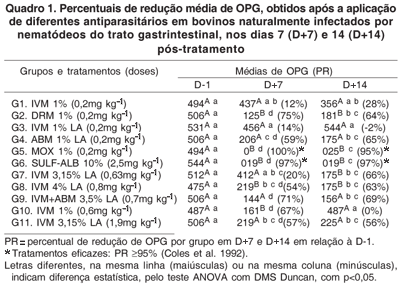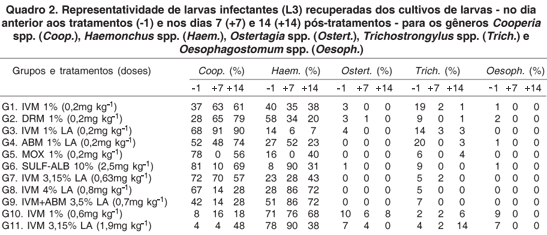The macrocyclic lactones (MLs) (avermectins and milbemycins) are endectocides broadly used in livestock and in some parasitic diseases of humans. In cattle, parasite resistance to MLs is emerging, and the appearance of formulations that differ in their pharmacological properties become complex the choice of the most appropriate drug to each case. In order to evaluate possible alternatives to restore the effectiveness of MLs on resistant strains of gastrointestinal nematodes, were tested, in this study, ten different treatments based on the MLs on a population of gastrointestinal nematodes of cattle which, known, was under pressure of selection by 1% avermectins. Additionally, was tested a benzimidazole. The efficacy of the drugs was calculated with basis on the reduction of eggs per gram of feces (EPG) of cattle. The resistance of each genus was evaluated by identification of the larvae, obtained from culture in the feces, pre- and post-treatments. The desired efficacy was not obtained using long action avermectins - with high concentration and in association - even with the application of high doses. The genera Cooperia spp., Haemonchus spp. and Trichostrongylus spp. were resistant to avermectins, and Ostertagia spp. to ivermectin. It was observed that, once established parasite resistance to the 1% MLs, the application of drugs, of this same chemical group, even in formulations of high concentration, association or in high doses, may not result in the expected efficacy.
Macrolactones; long action; parasite resistance; helminthes


